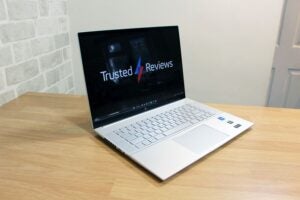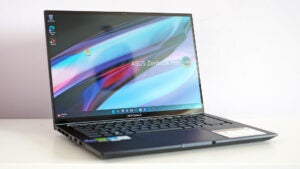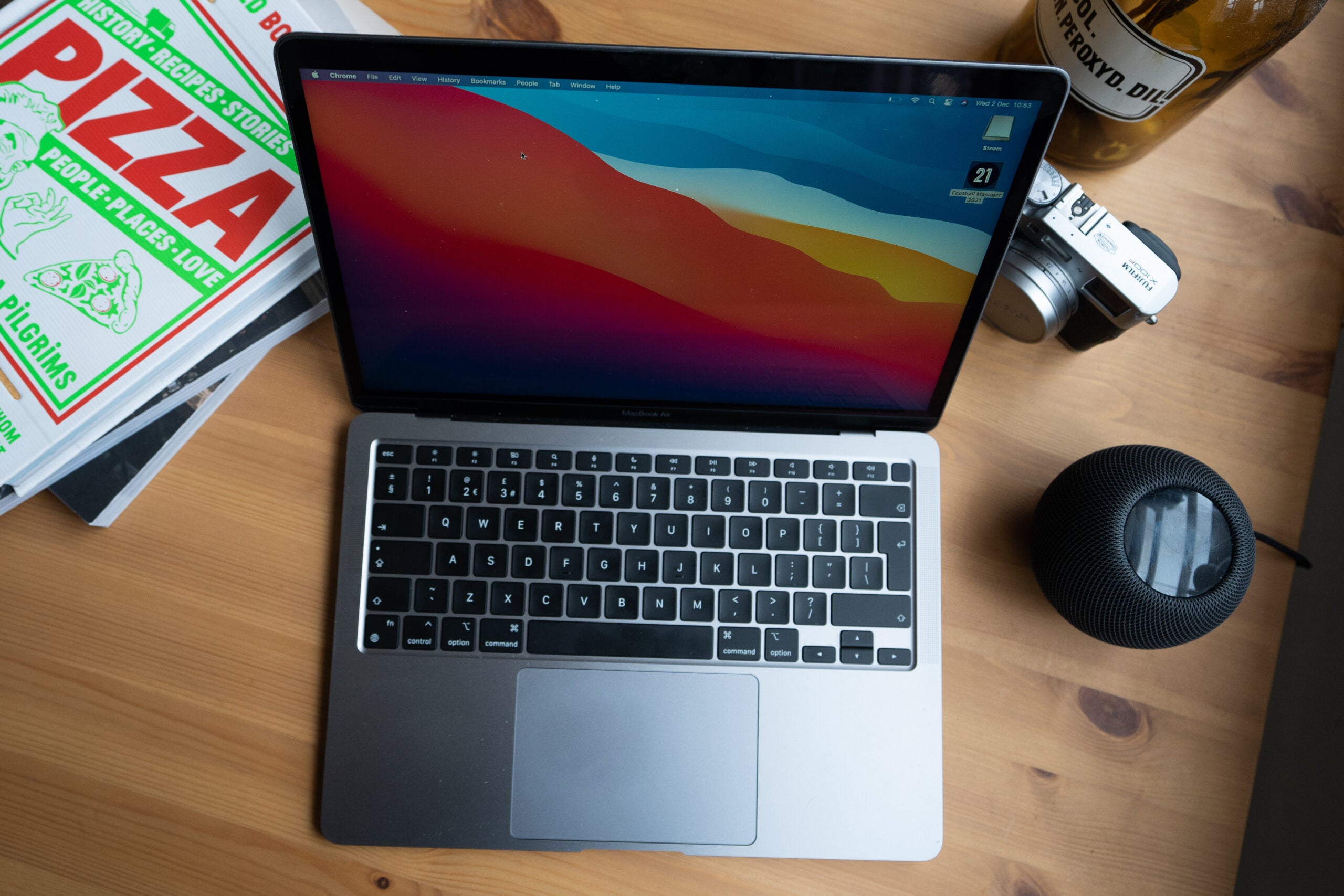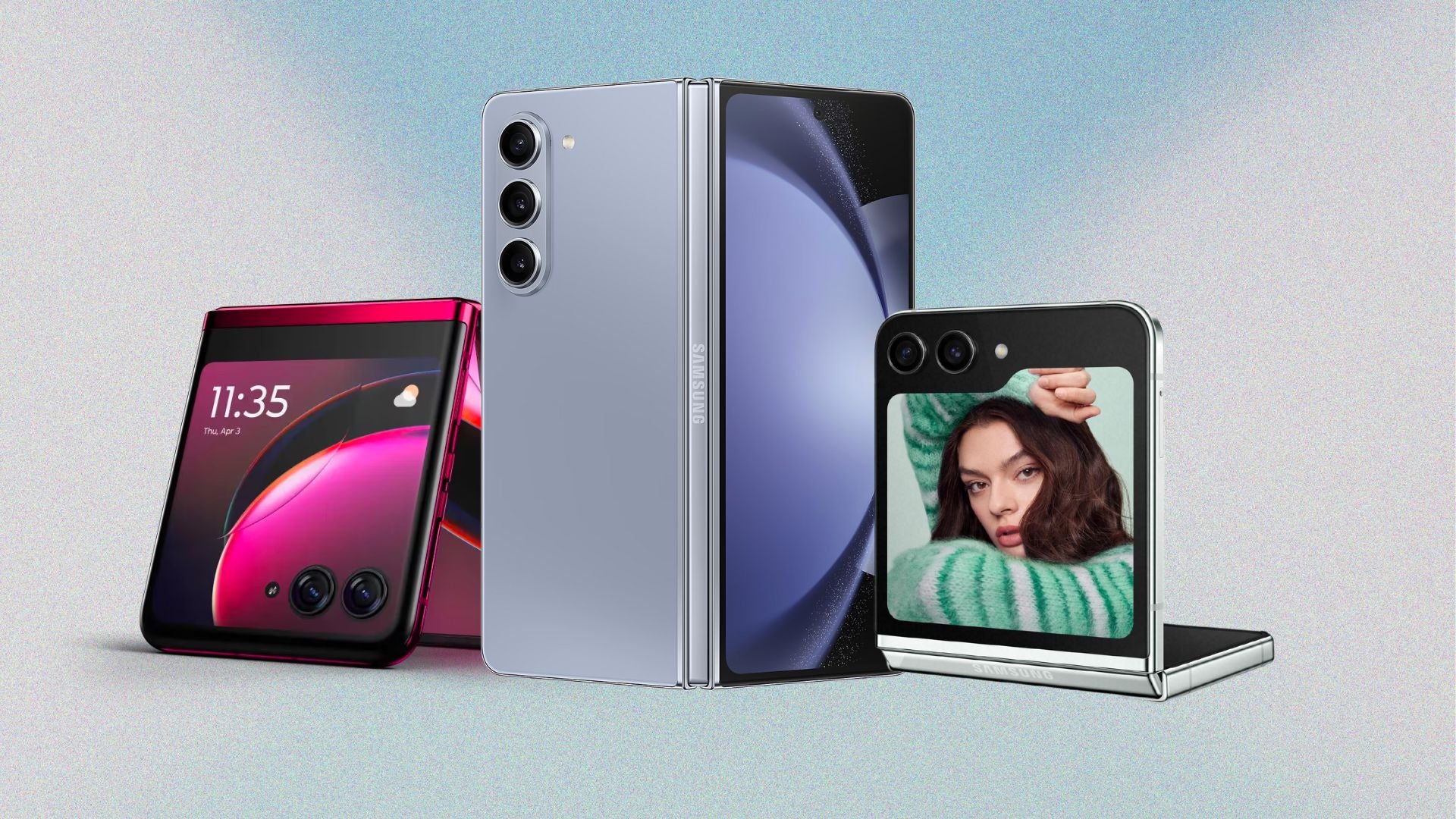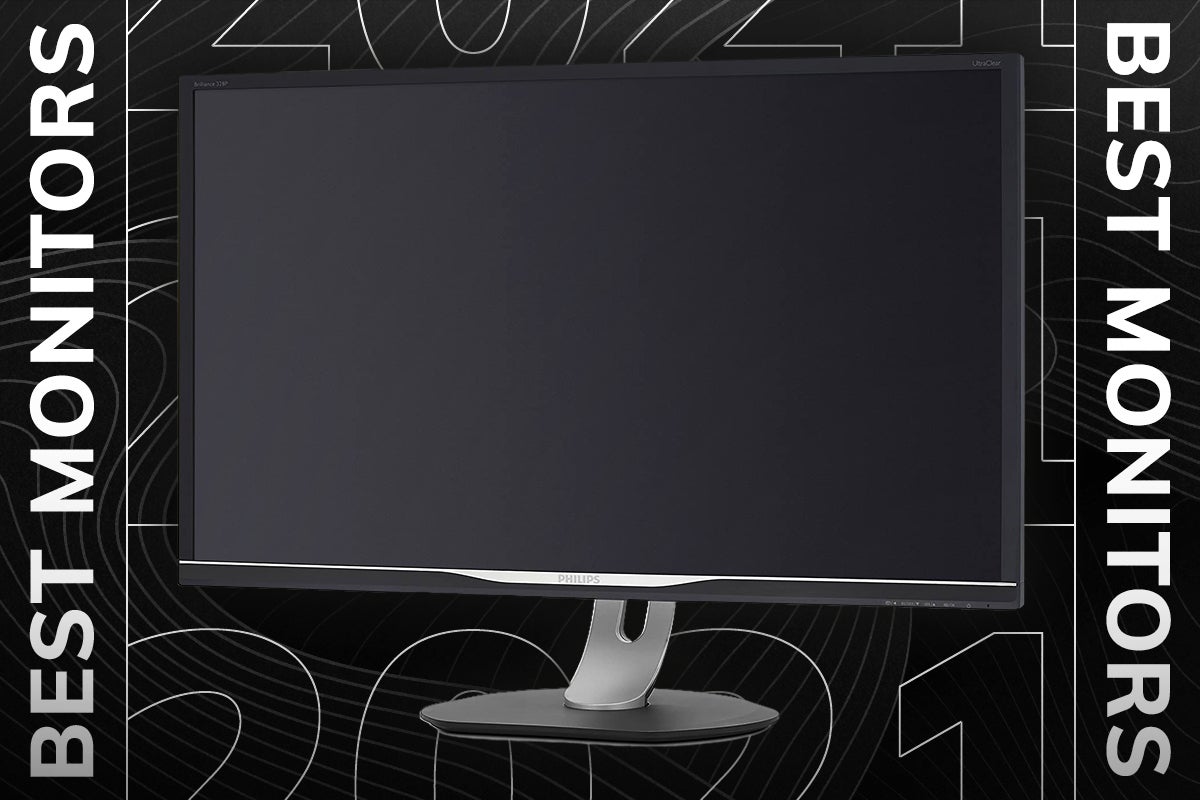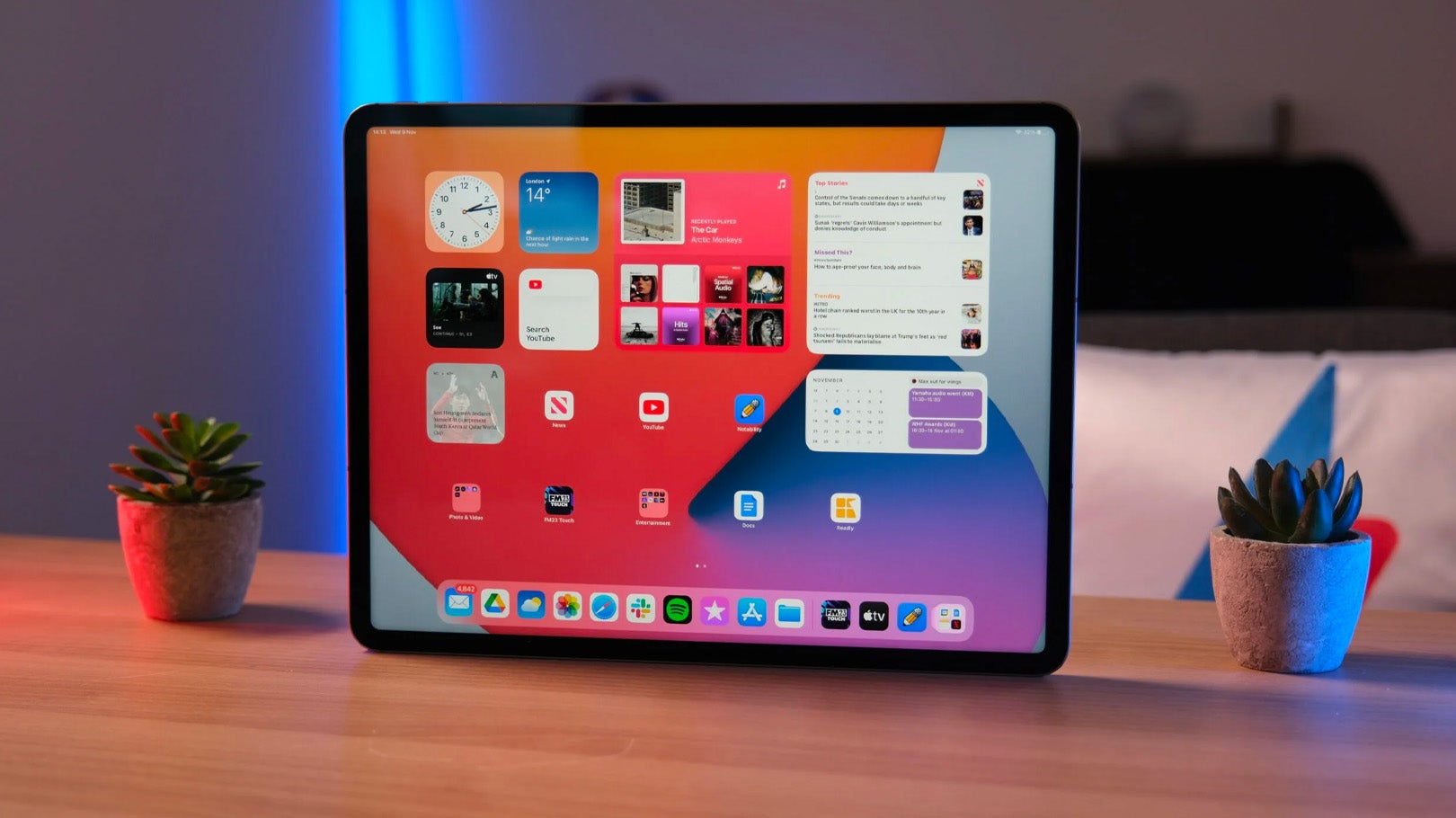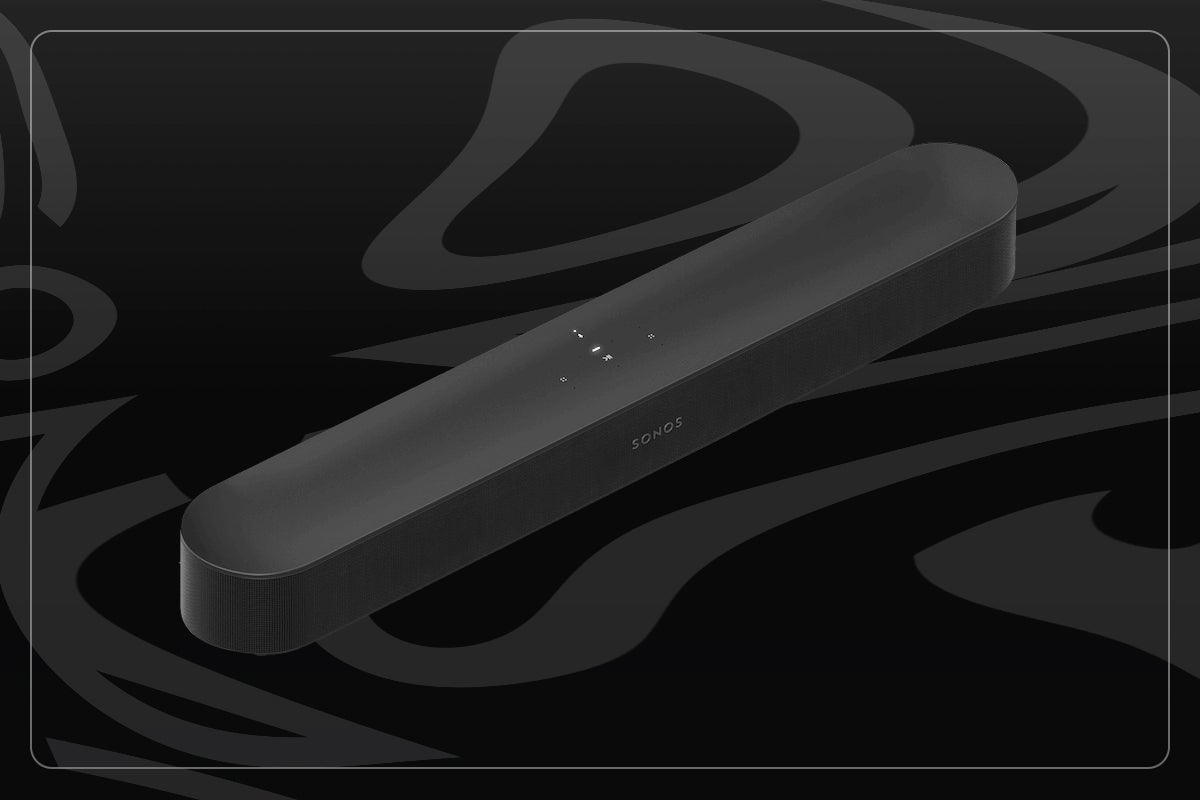Best Laptop for Video Editing 2024: Top picks from Apple, Asus and more
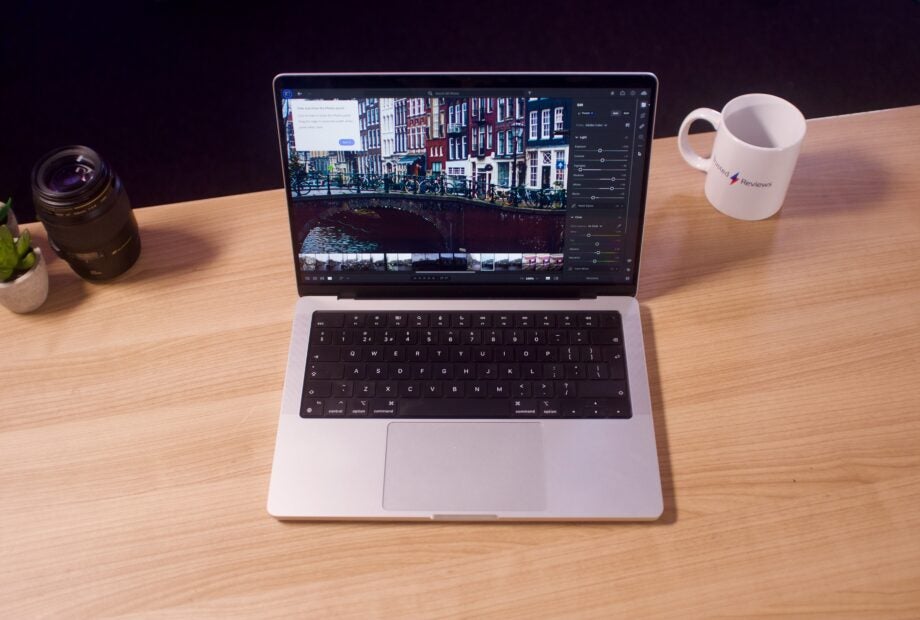
If you need a laptop primarily for video production, then you’ll need a machine with a lot of graphical grunt. That rules out multiple options, making it difficult to find the best laptop for video editing.
The most important aspect of a laptop for video production is the graphics chip, so we’ve picked out highly reviewed laptops with high-powered graphics power. Every laptop has been tested by one of our experts, who have tested the performance via both professional-grade benchmarks and real-world use. And only the top rated laptops have been considered for this best list.
We have also made sure to include laptops with a wide variety of price points, so don’t worry if you can’t afford a laptop that costs over $2000/£2000.
If you can’t find a laptop you like right now, then check back in a few weeks. We’ll be updating this list on a constant basis, adding any new laptop that passes our strict testing criteria.
And if you still can’t afford any of the laptops on this list, it’s worth checking out our roundups for Best Laptop, Best Ultrabook or Best Student Laptop, which include portables that excel at more general productivity workloads.
Best laptop for video editing at a glance
- Best overall: MacBook Pro 14-inch (2023) – check price
- Best Windows Laptop: Asus Zenbook Pro 14 OLED (2023) – check price
- Best luxury laptop: Razer Blade 16 (2023) – check price
- Best value laptop: HP Envy 16 – check price
- Best dual-screen laptop: Asus ZenBook Pro 14 Duo OLED – check price
- Best convertible laptop: Acer ConceptD Ezel 7 – check price
How we test
Every laptop we review goes through a series of uniform checks designed to gauge key things including build quality, performance, screen quality and battery life.
These include formal synthetic benchmarks and scripted tests, plus a series of real world checks, such as how well it runs the most frequently used apps.
We also make sure to use every laptop we review as our primary device for at least a week to ensure our review is as accurate as possible.
- Dual-screen design is great for select apps
- Lightning-fast performance
- OLED screen looks dazzling
- Optional Nvidia GPU
- Poor battery life
- Keyboard feels cramped
- Superb colour depth
- Well-designed, versatile display hinge
- High-end Wacom EMR digitiser
- Textured glass screen is a great stylus surface
- Noticeable fan noise
- Uses last-gen CPU/GPU
- Expensive
- Weak speakers
- Huge amount of internal options
- Stunning screen
- Stays quiet and cool
- Even more expensive than before (for those in the UK)
- Lack of Face ID makes the notch feel dated already
- Pricey to upgrade the memory
- Powerful, versatile internals
- Impressive battery life
- Consistently cheaper than rivals
- A great webcam and decent connectivity
- Default display can’t compete
- Middling build quality
- Thicker and heavier than competitors
- Powerful, and ready to play games
- Pixel-rich OLED screen
- Quality keyboard and touchpad
- Unusual DialPad virtual rotary controller
- High-pitch fan noise
- Portable design does involve performance concessions
- Mammoth RTX 4090 performance
- Luxurious Mini LED display
- Decent keyboard
- Good quantity of ports
- Palm rejection sorely needed
- Dual Mode and Nvidia Optimus don’t play nice together
- Only one Thunderbolt 4 port
- More workstation than powerful portable
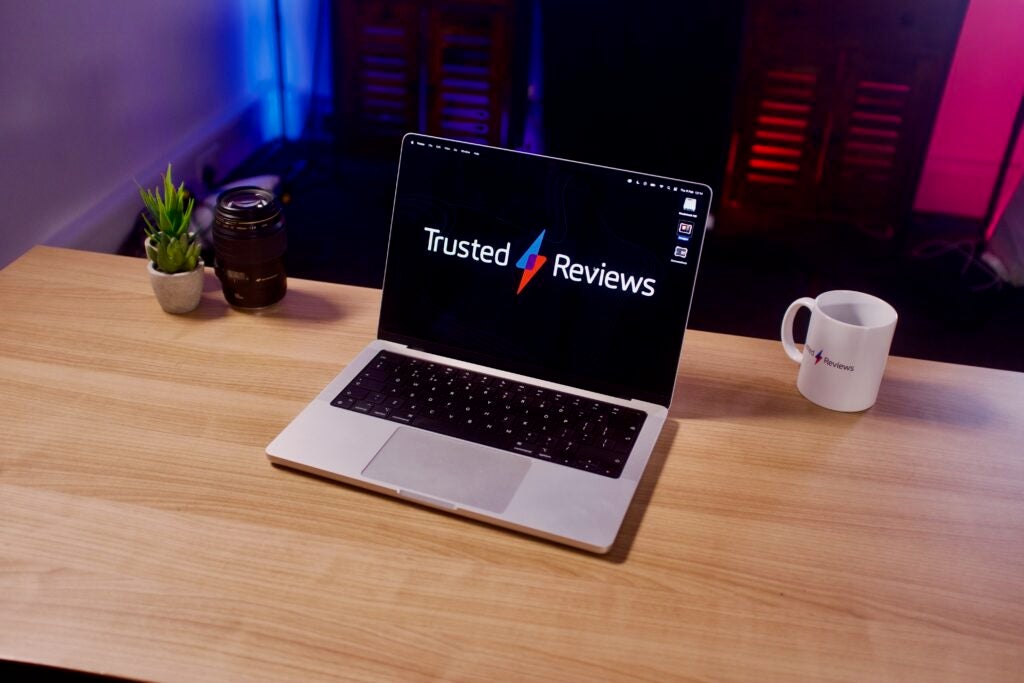
Apple MacBook Pro 14-inch (2023)
Best overall laptop for video editing
Pros
- Huge amount of internal options
- Stunning screen
- Stays quiet and cool
Cons
- Even more expensive than before (for those in the UK)
- Lack of Face ID makes the notch feel dated already
- Pricey to upgrade the memory
Apple has long been the best company at producing laptops for intensive workloads such as video editing, and that hasn’t changed with the new MacBook Pro (2023). With the option of an M2 Pro or M2 Max chips, you’re getting blistering speeds that will breeze through rendering times.
This makes the new MacBook Pro even more powerful than the 2021 edition. You can admittedly find Windows laptops powered by GPUs with similar (if perhaps more) graphical grunt. But no other laptop can balance such a powerful performance with battery life – our testing shows the MacBook Pro to be capable of outlasting the day, while high-end Windows laptops can’t even last a few hours away from the mains.
The 14-inch screen size of the MacBook Pro also makes this laptop delightfully portable, which is useful for those who like to work on the go or commute into the office. Apple does also offer a 16-inch model if you’d prefer a little more screen space over improved portability.
There is one major drawback to the MacBook Pro, and that’s the price. With a £2149/$1999 starting price, it may be too steep for entry-level video editors. We recommend looking for a discounted MacBook Pro 2021 if the price is a problem, or even considering switching over to Windows.
Reviewer: Max Parker
Full review: Apple MacBook Pro 2023 review
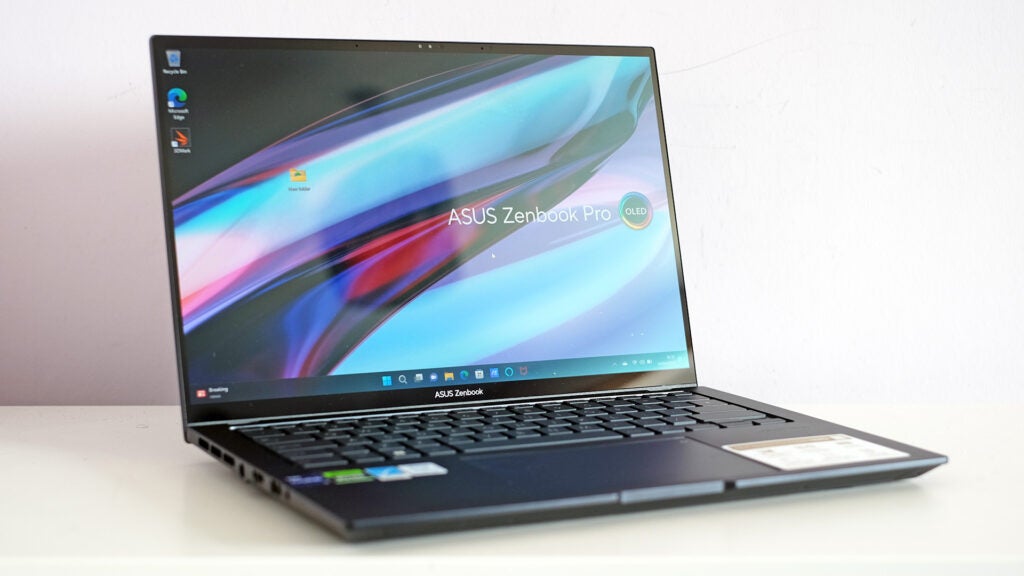
Asus Zenbook Pro 14 OLED (2023)
Best Windows laptop for video editing
Pros
- Powerful, and ready to play games
- Pixel-rich OLED screen
- Quality keyboard and touchpad
- Unusual DialPad virtual rotary controller
Cons
- High-pitch fan noise
- Portable design does involve performance concessions
If you’re looking for a Windows-sporting alternative to the MacBook Pro, then look no further than the Asus Zenbook Pro 14 OLED (2023). It’s a machine with the total package, and comes with something that even the excellent MacBook Pro doesn’t yet offer.
The key feature offered by Asus, but not by Apple, is in the name, and that’s an OLED display. The screen on the Asus Zenbook Pro 14 OLED makes it ideal for editors who crave accurate and bold colours. The luxurious OLED technology is backed up by a 2.8K resolution, HDR and strong colour gamut results. It gets supremely bright too for HDR content, hitting almost 600 nits. On top of all of that, you get a 120Hz refresh rate too for super smooth timeline scrolling.
This is a great laptop for on-the-go creative work, even if it won’t be able to match up to the performance offered by the MacBook Pro when away from power. Nevertheless, it’s an impressively portable device for what’s on offer, with our review model sporting an Intel 13th Gen Core i9 and RTX 4070 combo that keeps up with high-end gaming laptops, despite offering more office-friendly looks and a reasonable size. Whether you’re looking for an adaptable machine for 3D modelling, intensive editing or some gaming, the Zenbook Pro 14 OLED is a tremendous all-rounder.
For those who appreciate additional keys when it comes to assisting you with your editing workflow, the Asus also has a handy DialPad in the top left corner of the trackpad. This allows you to swiftly scrub timelines, switch between brushes and more.
Reviewer: Andrew Williams
Full review: Asus ZenBook Pro 14 OLED (2023) review
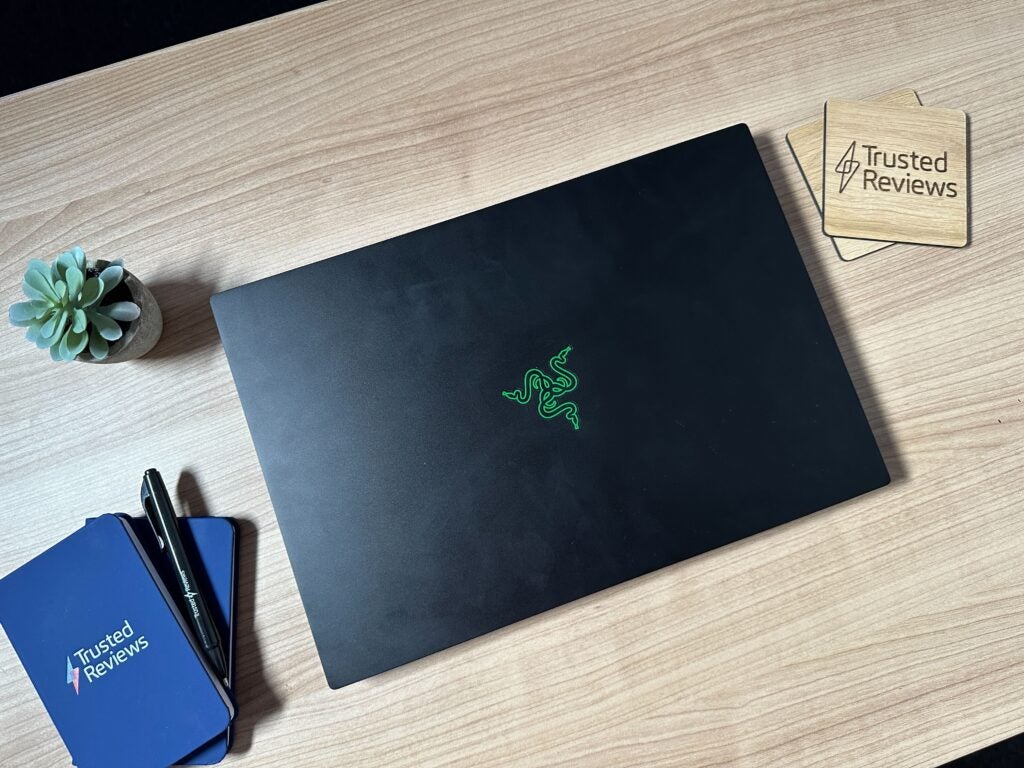
Razer Blade 16 (2023)
Best luxury laptop for video editing
Pros
- Mammoth RTX 4090 performance
- Luxurious Mini LED display
- Decent keyboard
- Good quantity of ports
Cons
- Palm rejection sorely needed
- Dual Mode and Nvidia Optimus don’t play nice together
- Only one Thunderbolt 4 port
- More workstation than powerful portable
If you’re looking for an immensely powerful laptop for video editing that also offers a luxurious and durable design, the Razer Blade 16 is the machine to consider. It offers Razer’s signature MacBook-like build but in an updated larger, more workstation-like, form factor. It isn’t built for portability (though it’s doable) and is better suited as a desktop replacement that looks the part too.
The most interesting feature of the Razer Blade 16 is a gaming-flavoured one, with the ability to switch between UHD+ 120Hz and FHD+ 240Hz natively. This aims to provide improved FHD+ performance, compared with just lowering the resolution in your settings, and it does just that, even if the effect is slight. Despite this feature not being one that’s made to woo video editors, the rest of the display tech should. The model that comes with this Dual Mode feature is also a Mini LED panel, and it’s stunning. You get stunning blacks and crisp contrast, along with top-notch accuracy. Whatever you do on this display, whether it’s video editing or gaming, you’re going to be constantly impressed.
There’s no question that this laptop has the juice to back up the stunning screen too, with an Intel Core i9 and RTX 4090 combination at the high end. This show of force offers up power for intensive video editing and high-end gaming. The Razer Blade 16 isn’t cheap but if you’re after a luxe workstation for your demanding video editing needs then you won’t be disappointed.
Reviewer: Adam Speight
Full review: Razer Blade 16 (2023) review
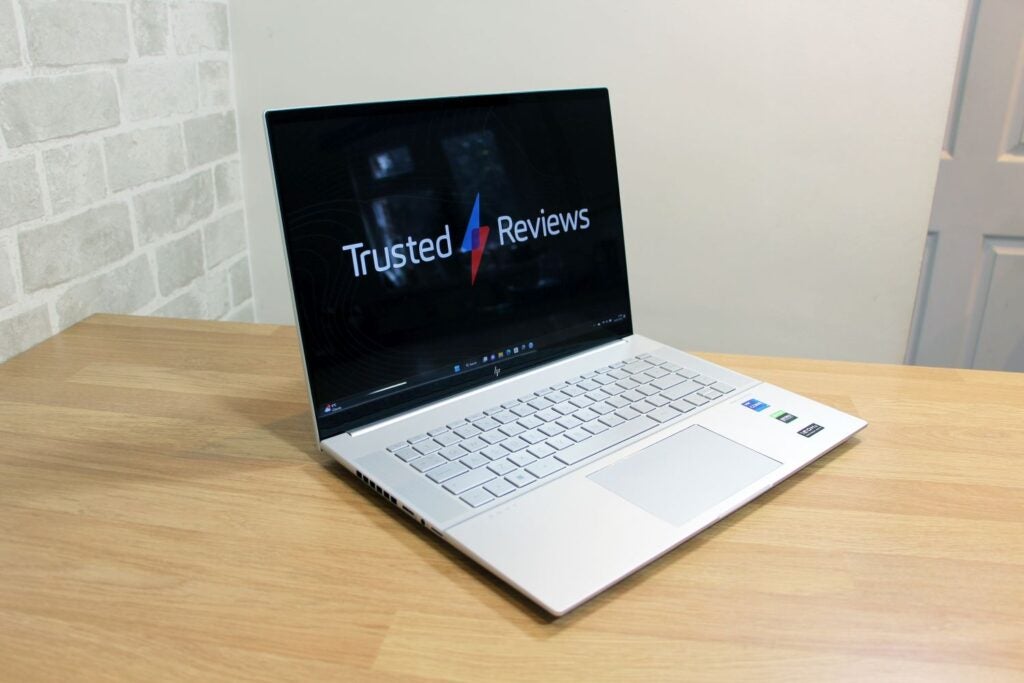
HP Envy 16 (2022)
Best value laptop for video editing
Pros
- Powerful, versatile internals
- Impressive battery life
- Consistently cheaper than rivals
- A great webcam and decent connectivity
Cons
- Default display can’t compete
- Middling build quality
- Thicker and heavier than competitors
The biggest problem with laptops designed for video editing is that they can empty your savings account in one fell swoop. The HP Envy 16 (2022) is a refreshing change, with a more affordable starting price of £1599/$1749. That’s not exactly cheap, but it offers great bang for your buck when you consider the power of the specs.
Powered by the combination of an Intel Core i7-12700H processor and Nvidia RTX 3060 GPU, our benchmark tests show the HP Envy 16 to be comfortably powerful enough to blaze through creative workloads such as video editing. It boasted more than twice the power of the Dell XPS 15 with an RTX 3050 Ti GPU.
The HP Envy also comes with a 16-inch screen with a sharp 2560 x 1600 resolution and smooth 120Hz refresh rate. Our tests did show it only covered 70% of the Adobe RGB and DCI-P3 colour gamuts – that should be okay for entry-level creatives, although those who crave perfect colour accuracy may want to look elsewhere, or even upgrade to the optional OLED model.
We do have minor concerns about the laptop’s design, especially in regards to how heavy it is. But considering the comparatively low price, there was always going to be a compromise or two.
Reviewer: Mike Jennings
Full review: HP Envy 16 (2022) review

Asus ZenBook Pro 14 Duo OLED
Best dual-screen laptop for video editing
Pros
- Dual-screen design is great for select apps
- Lightning-fast performance
- OLED screen looks dazzling
- Optional Nvidia GPU
Cons
- Poor battery life
- Keyboard feels cramped
The option to have a dual-screen setup will likely be a draw for video editors, as it not only allows you to use the second display as a toolbar for certain content creation apps, but also to give you more room to see additional windows and apps. The Asus ZenBook Pro 14 Duo OLED is a shining example of what it can do.
Inside, the Intel Core i7-12700H processor offers a smashing performance, with our benchmark results showing it to be one of the fastest Windows laptops currently on the market. The Xe integrated graphics on offer will suffice for basic video editing work, and if you wish for an added boost in graphics performance, you can configure the Zenbook Pro 14 Duo OLED with a discrete Nvidia RTX 3050 Ti GPU.
A real standout feature here is the 14-inch OLED panel that we found to offer excellent colour accuracy alongside inky blacks which help to boost the contrast significantly. We measured colour coverages of 97% DCi-P3 and 96% Adobe RGB, ensuring the Asus laptop is capable of accurately presenting photos and video.
The only real downside here is battery life, as the Zenbook Pro 14 Duo OLED could only muster four and a half hours in our tests before shutting down, albeit with both screens running. Even with the smaller ScreenPad Plus off, Asus’ dual-screen candidate lasted for only around six and a half hours. This means this is really a laptop that’s best used when plugged in for your video-editing exploits.
Reviewer: Ryan Jones
Full review: Asus ZenBook Pro 14 Duo OLED review
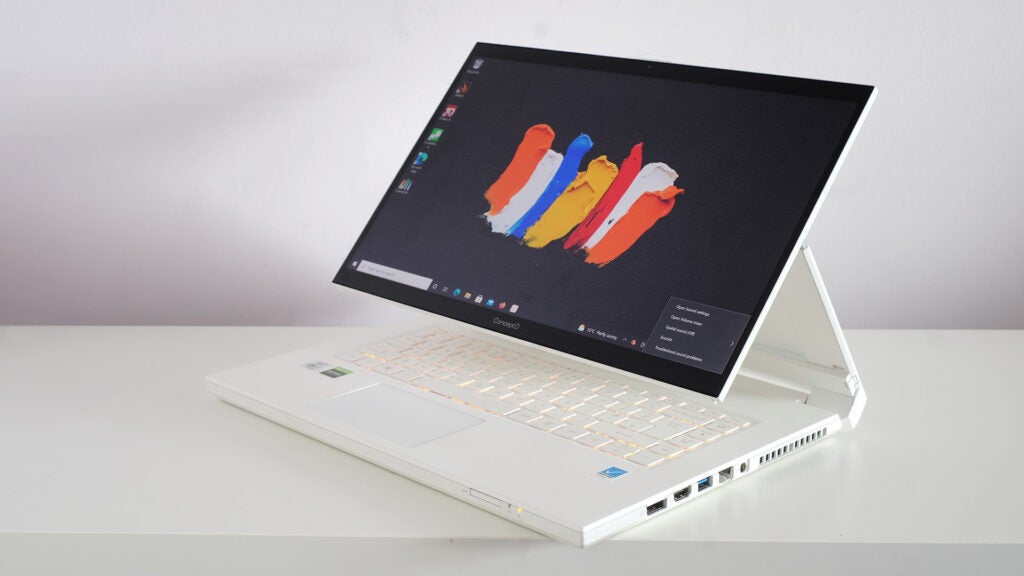
Acer ConceptD Ezel 7
Best convertible laptop for video editing
Pros
- Superb colour depth
- Well-designed, versatile display hinge
- High-end Wacom EMR digitiser
- Textured glass screen is a great stylus surface
Cons
- Noticeable fan noise
- Uses last-gen CPU/GPU
- Expensive
- Weak speakers
The Acer Concept D Ezel 7 is a smartly designed convertible laptop with a clever hinge that allows the screen to be tilted towards the user, as well as flipped around the back of the keyboard for a more traditional tablet-style experience.
It offers an incredible LCD display , with our colorometer proving that it’s capable of some truly fantastic colour coverage, which is very important for video editing. Interestingly, the LCD display here also works with a stylus that uses the same digitizer tech that’s present in some of Wacom’s high-end drawing tablets. This means the Ezel 7 is a great choice for illustrators too, given the stylus support and the responsive nature of such a light stylus.
Packing a 10th generation H-series Intel Core i7 processor and an Nvidia RTX 2070 Max-Q GPU, the Ezel 7 can blaze through tasks for professional creators. The SSD inside the Ezel 7 is also pretty fast, and will be quick enough for loading and saving large video files in no time at all. Thermal performance is decent enough, and there’s a good amount of cooling on offer, although the fan system can get a little noisy at times.
At 2.5kg, the Ezel 7 is a heavy beast and compares more in weight to one of the best gaming laptops than one for creatives. Nonetheless, it feels excellent in hand with some fantastic build quality thanks to a metal frame. We found the connectivity here to be excellent with support for Thunderbolt 4, as well as ethernet, HDMI and DisplayPort. Just watch out for the slightly shallow keyboard compared to the Ezel 3 Pro, and the quite garish and dim orange backlight.
Reviewer: Andrew Williams
Full review: Acer ConceptD Ezel 7
We also considered…
FAQs
We would not recommend opting for 256GB when buying a laptop for video editing. One hour of 4K footage can take up around 42GB of storage. Add in other important files such as audio, and you can see how your laptop hard drive can quickly be filled up to the brim. If you work with lots of video files, we suggest opting for a 1TB model, while a 512GB configuration should be enough for most people too.
Intel suggests that you need at least 32GB of RAM for 4K editing. We reckon you could get away with 16GB if you want to keep your budget down as low as possible.
If you want to frequently edit video without sluggish rendering speeds, then you’ll need a laptop with a powerful GPU. AMD and Nvidia supply lots of discrete graphics chips in a huge range of laptops, with Apple’s M1 processor series also excelling at such workloads.





